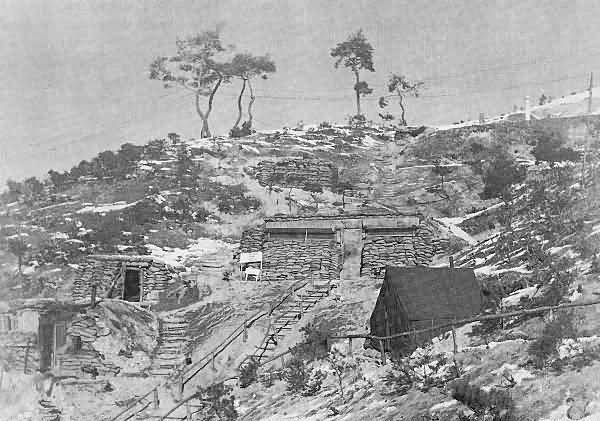In winter of '52 President-Elect Eisenhower visited the front lines near Chorwon, and then made it clear that he was only interested in ending the war with an honorable peace. At this time, about 700,000 CCF and NK troops were in the line or in reserve, facing about 350,000 UN infantry. The slaughter went on until July 27, 1953, during which time the CCF continually probed our lines to find points of weakness, and attacked wherever they thought they could improve their positions before the cease-fire. The Communists generally spent around 5 months digging large caves and underground locations for their troops all along the line. This protected them from UNC air and artillery, as well as the weather. UNC generally relied on a bunker system.
Here, as a component of IX Corps, 25id has strong bunker positions on the reverse slope somewhere in the White Horse, Triangle Hill, and Jackson Heights area, around October, 1952. 80% of bunkers like these were usually underground, and could be entered from the trenches which linked the entire front. Thick logs and sandbags, covered by a layer of loose sand, sticks and rocks gave protection from artillery and mortar hits.


